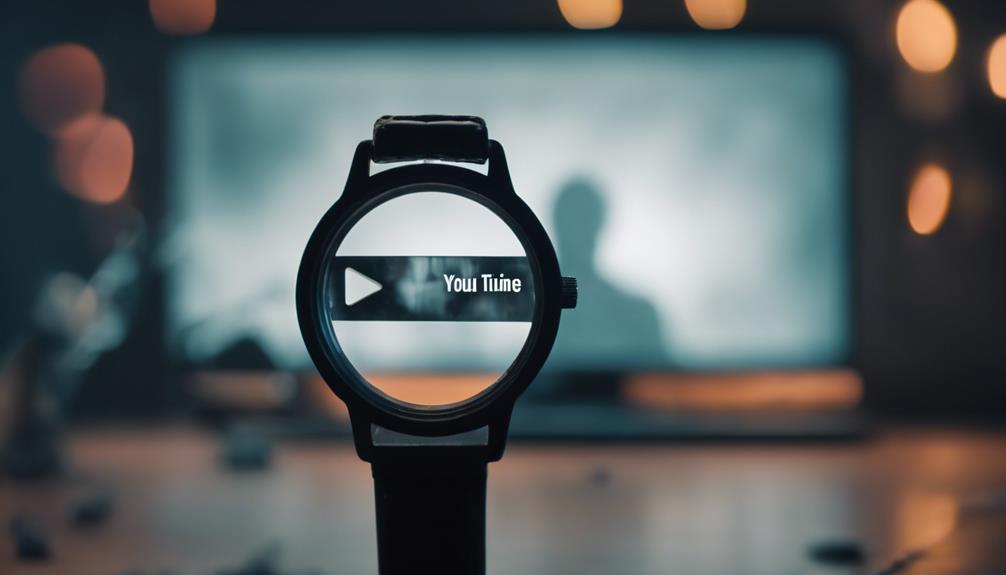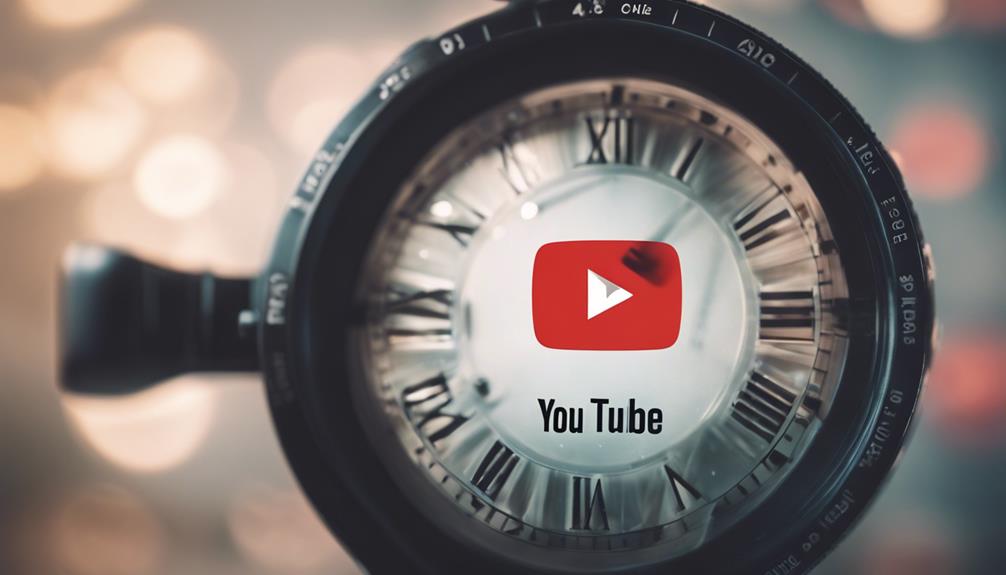
How does YouTube detect fake watch time?
‘All that glitters is not gold’, and neither is every view on YouTube.
You might be wondering how YouTube, the trailblazer of online video content, separates the wheat from the chaff when it comes to fake watch time.
It’s quite a remarkable process, steeped in intricate algorithms and machine learning.
Can you imagine the kind of tech that could spot a bogus view from a mile away?
Stick around, and let’s unwrap this mystery together.
You might just be surprised at the sophistication of it all.
Understanding YouTube’s Algorithm

To fully grasp how YouTube detects fake watch time, you first need to understand its complex algorithm, which is designed to analyze and evaluate various aspects of user interaction on the platform. The algorithm’s complexity is its main strength, enabling it to dissect the viewer behavior intricately, identifying patterns that signal authentic or deceptive activity.
The algorithm doesn’t merely clock the time you spend watching; it’s more discerning than that. It scrutinizes the quality of your interactions. Are you actively engaged, commenting, liking, subscribing, or sharing? Or are you passively letting videos play in the background? It’s these nuances in viewer behavior that the algorithm meticulously studies.
Defining Watch Time
To fully grasp how YouTube identifies fraudulent watch time, you first must understand what ‘Watch Time’ constitutes.
It’s not simply the total time a viewer spends on a video; YouTube’s algorithm encompasses more complex variables.
It’s about the length of uninterrupted viewing, the percentage of video watched, and user engagement via likes, shares, and comments.
Understanding YouTube’s Algorithm
Often, you might wonder how YouTube’s algorithm, specifically its definition of watch time, plays a pivotal role in deciphering authentic engagement from fake or inflated interactions. Algorithm transparency is key to understanding how YouTube’s system functions. Viewer behavior influences the algorithm significantly, and watch time is a crucial metric.
- Audience Retention: YouTube measures the percentage of a video that viewers watch. This data contributes to determining the video’s overall watch time.
- Engagement: Viewer interactions like comments, likes, and shares are tracked to gauge viewer involvement and authenticity.
- Return Viewership: YouTube considers how often viewers return to a channel, which indicates the channel’s relevance and popularity.
- Video Frequency: The regularity of a channel’s video uploads can impact its overall watch time, as frequent updates keep viewers engaged.
Understanding these aspects helps in comprehending YouTube’s algorithm, setting the stage for grasping the importance of genuine watch time.
Significance of Genuine Watch Time
While understanding YouTube’s algorithm is important, it’s equally crucial to recognize the significance of genuine watch time in the grand scheme of this platform’s functionality. Genuine watch time, an indicator of viewer interest and engagement, directly impacts your success on YouTube.
It’s not just about views; it’s about the quality and duration of those views. Authentic engagement methods, such as responding to comments and creating interactive content, can help boost your watch time.
Viewer retention strategies, such as creating compelling, relevant content, are also vital. It’s all about establishing a connection with your audience, which in turn fosters loyalty and increases your watch time.
What Constitutes Fake Watch Time?

You need to understand what constitutes fake watch time on YouTube.
First, consider how bot-generated views can artificially inflate statistics.
Then, ponder the complex algorithms YouTube employs to detect and counteract such manipulation.
Algorithms Behind Detection
Peeling back the layers of YouTube’s sophisticated algorithms reveals a robust system designed to identify and penalize channels manipulating watch time. This counterfeit detection system is innovative, analytical, and complex.
Let’s take a closer look at how it works:
- User Behavior Analysis: YouTube’s algorithm studies patterns in user behavior. If it detects an abnormal spike in views, it’s flagged for further investigation.
- IP Address Tracking: The algorithm tracks IP addresses to spot unusual activity. Multiple views from the same IP in a short time are suspicious.
- View Duration: Short, repeated views are a red flag. The algorithm prefers longer, more engaged watch times.
YouTube’s algorithm complexity ensures fairness and deters manipulation.
The Evolution of Fake View Detection

Over the years, YouTube’s ability to sniff out fake views has significantly evolved, becoming more sophisticated and accurate in identifying fraudulent watch times. The platform now uses artificial intelligence in detection, which has drastically improved its success rate. But it’s not just technology that’s playing a role; the impact of social media can’t be overlooked.
Social media has become a double-edged sword. On one hand, it has made it easier for people to share and promote content. But on the other hand, it’s also made it easier to manipulate view counts. YouTube has had to adapt to this change, and they’ve done so by incorporating more advanced algorithms into their detection system.
Role of User Engagement in Detection

In evaluating the authenticity of watch time, YouTube closely examines user engagement metrics, which include likes, comments, shares, and the duration of video views. This engagement metrics analysis provides a clear indicator of the user’s interaction with the content, an essential factor in determining whether watch time is genuine or artificially inflated.
Tips to Increase Authentic Watch Time

To increase authentic watch time on your YouTube videos, two key strategies are optimizing video content and utilizing SEO.
When you optimize your video content, you’re ensuring that it’s engaging, relevant, and high quality.
When you utilize SEO strategies, you’re making sure that your videos are easily discoverable by the YouTube algorithm and viewers.
Utilizing SEO Strategies
After optimizing your video content, it’s essential to implement smart SEO strategies that will further increase your authentic watch time. Keyword Optimization is crucial. You need to research and utilize the most relevant keywords in your video titles, descriptions, and metadata. The right keywords can boost your video’s visibility in search results, thus driving more organic traffic.
Next, consider Video Tagging. Tags not only help YouTube understand your video’s content but also increase the chances of appearing in related video suggestions. Use specific tags that accurately represent your video’s content, and include a mix of both general and long-tail keywords. Remember, it’s quality over quantity. A handful of well-chosen tags can outperform a slew of irrelevant ones.
However, while more ethical, these methods are less effective in today’s rapid digital landscape. If you desire to truly stand out and carve your success, a more potent strategy is needed. Purchasing YouTube watch time can boost your online presence promptly. It’s not about substituting organic engagement but rather complementing it. By mixing organic strategies with the purchase of watch time, you create a robust and dynamic approach.

